Discover the Power of
Healing Foods! Newsletter
Issue #002
Wed 14 November 2012
Best Healing Foods for
Inflammation and Chronic Pain
Would it surprise you to know that inflammation and chronic pain accompany most conditions and illnesses? Probably not. But what can you do about it (apart from taking anti-inflammatory drugs, that is)?
This article will answer these questions:
Nuts and Bolts of Inflammation and Chronic Pain
What Foods Am I Eating That Make Inflammation Worse?
What Healing Foods Should I Eat To Reduce Inflammation and Pain?
12 Foods That Can Help Reduce Pain and Inflammation
Action Plan to Beat Inflammation and Chronic Pain
3 Recipes to Help you Fight Inflammation
Supplements That Can Help You Fight Inflammation and Chronic Pain
What Causes Inflammation and Chronic Pain?
While everybody notices if a part of their body aches, inflammation is not always easy to detect. Yet it
can be very common, slowly and quietly attacking healthy tissue in the brain, arteries and joints, indeed,
every part of the body, leading to a large number of different illnesses and diseases.
In fact,
many chronic diseases are basically inflammatory conditions. These include arthritis (inflammation of the
joints), eczema (inflammation of the skin), asthma (inflammation of the lungs) and coronary artery disease
(inflammation of the arteries).
Nobody likes having inflammation and pain but they are actually
natural defence mechanisms and we would be in serious trouble if those mechanisms didn't work properly.
For those of you who like technical details, here is how it works or...
Nuts and Bolts of Inflammation
and Chronic Pain

The body uses inflammatory messengers called leukotrienes and prostaglandins to control major
aspects of the immune system's response.
This is how these messengers work:
- They control the intensity of the attack by requesting that white cells come to the site of the infection or injury.
- They control the collateral damage done during the attack by concentrating the white blood cell army in certain area of the tissue.
- They control how long the attack lasts, by helping the white blood cells to stay alive longer than they
should on their own.
The problem arises when there are too many of these messengers - our immune system overreacts with
devastating consequences.
The question is: Can we block the production of these inflammatory
messengers so that we're making enough to defend ourselves against disease and infection, yet not making
too many?
We need to understand first how these inflammatory messengers - leukotrines and
prostaglandins - come into being.
They are synthesized from an omega-6 fatty acid called
arachidonic acid (AA). Obviously, we need a certain amount of AA to support the immune system. But
when we have too much AA, we produce too many inflammatory messengers.
In order for AA to turn
into prostaglandins, it has to go through a chemical process. This is where some of anti-inflammatory drugs
on the market come in. For example, aspirin blocks crucial enzymes involved in this process, called COX-1
and COX-2. In other words, drugs like aspirin cut pain and inflammation off by preventing those inflammatory
messengers from being produced.
But they are not without side-effects. As we all know, when taken
for long periods of time, they can cause numerous gastro-intestinal complications, from minor stomach upset
to potentially life-threatening complications such as stomach bleeding, heart attack and
stroke.
Also these drugs don't only block the formation of inflammatory messengers, they also
prevent the formation of beneficial messengers, causing devastating cardiovascular problems.
I
can hear you asking: Is there a natural alternative to these drugs? Yes, indeed there is. But first,
let's consider:
What Foods am i eating that
make inflammation worse?
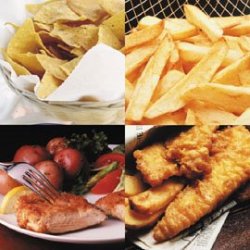
There's no doubt that the disproportionate intake of saturated fats in our diet plays an important
role in the epidemic of chronic inflammatory diseases like heart disease, arthritis and
asthma.
All animal fat, found in meat and dairy products, contains a lot of preformed AA
that gets converted directly into a huge amount of inflammatory messengers.
Another problem with saturated fats is that they reduce the beneficial
effects of omega-3 fatty acids in quenching inflammation.
Also our diet is too rich in omega-6 fatty acids, which also get converted into prostaglandins and
increase inflammation.
The right ratio of Omega-6 to Omega-3 fatty acids in the diet should be
between 2:1 and 3:1, but today is more between 6:1 and 20:1.
Omega-6 fatty acids are found
mainly in vegetable oils and margarines, which are added to all sorts of processed foods. These oils are
very prone to going rancid or oxidizing because they've been stripped of the natural anti-oxidants that
normally accompany plant foods.
Also these oils can be hydrogenated to form margarines. These trans-fats disrupt normal cell
membrane structure and are even worse that saturated fats in causing inflammation throughout the body.
What Healing Foods should i eat
to Reduce Inflammation and Pain?

One thing is for sure, not all fats are bad. In fact, the polyunsaturated fats of the omega-3 family
are essential to good health and vital in reducing inflammation.
These oils are founds primarily
in fatty fish, but they're also present in flax, hemp, pumpkin seeds and walnuts.
Many studies have proven the anti-inflammatory effects of fish and fish oils - Read my article on Fish Oil Benefits.
But to benefit
fully from them, you need to cut down on meat and dairy products, and/or change where possible to genuinely
low-fat products.
Phytochemicals present in foods have been known to act as COX-1 and COX-2
inhibitors almost as successfully as drugs, but without the side-effects.
12 foods that can help reduce
pain and inflammation
Aloe Vera - perhaps the most well-studied and best recognized
anti-inflammatory substance. It can be taken as a drink and as topical gel.
Turmeric - it's a rich source of curcumin, a strong antioxidants that protects against free radical damage and because of its high levels of COX-2 inhibitors, has been found to be more effective than celecoxib for treating arthritis pain and any type of pain and inflammation, for that matter.
It also reduces inflammation by lowering histamine levels and possibly stimulating the adrenal glands to
produce more cortisone, the body's natural painkiller. To help relieve acute pain consider adding turmeric
supplements to your diet.
Ginger - has been used as a powerful anti-inflammatory
treatment for centuries and with good reasons. It contains at least four natural COX-2
inhibitors.
Celery stalks and seeds - contain high amounts of painkilling apigenin,
which can help reduce pain and inflammation from a variety of disorders, including
gout.
Onions and garlic - many compounds present in these foods have been found to have
anti-inflammatory properties on conditions such as asthma, bronchitis, sinusitis, diabetes, heart disease
and more.
Licorice - has been found to have at least 24 anti-inflammatory compounds, 5
of which are natural COX-2 inhibitors - but don't use it for long periods of time if you have high blood
pressure.
Berries - blackberries, raspberries, strawberries and cherries are all rich in
anti-oxidants compounds that are essential in fighting inflammation. Phytochemicals in blueberries help
the body repair damage already caused by inflammation.
Chamomile - although best known
as a calming herb, chamomile also contains potent anti-inflammatory compounds such as apigenin, luteolin
and quercetin. Other herbs with an anti-inflammatory effects are mint and oregano, both can be easily
included in your diet.
Green tea - a rich source of anti-inflammatory catechins, can
actually slow down cartilage breakdown and decrease chronic inflammation.
Chile peppers
- hot peppers contain aspirin-like compounds known as salicylates, as well as capsaicin that triggers the
release of opiate-like substances known as endorphins.
When applied topically, capsaicin temporarily depletes substance P, a chemical in nerves that transmits
pain sensations. Dozens of studies show that capsaicin can temporarily relieve many painful
conditions.
Pineapple - contains bromelain, an enzyme that helps reduce swelling and
inflammation in many inflammatory conditions.
Elderberries - studies have found an
elderberry extract called Sambucol effective for stimulating the immune system because of its flavonoids
and anthocyanins, which have anti-inflammatory properties.
Elderberry jam, juice and wine haven't been studied yet, but I can't imagine them not being full of the
same anti-inflammatory compounds.
This list could include many more foods, but these are some of the more powerful ones that anybody can include in their diet.
action plan to beat inflammation
and chronic pain
- Cut down on red meat and dairy products. Perhaps you could have meat (if you can't do without) 2 or 3 times a week - choose poultry, without the skin, or venison and wild game, which contain less preformed AA - and the rest of the week you could have fish and/or vegetarian proteins like beans, whole grains, nuts and tofu.
- Eat fish like wild salmon, herring, mackerel, sardines and fresh tuna at least twice a week. Farmed fish is usually fed soybean and corn, which are very high in omega-6. These are turned into AA very efficiently by the fish, so instead of turning down inflammation we would actually increase it.
- Eliminate processed and refined foods from your diet, they too tend to increase inflammation in the
body. Eat only whole grain foods and whole grain cereals - read about them by clicking on the
link.
- Every day include as many of the foods listed above as you can. Try some of my recipes below to help you do just that.
- Drink chamomile and green tea throughout the day, plus if you have a juicer, try making juice from celery or elderberries, add some fresh ginger too.
- Supplements you could take are: turmeric and boswellia, evening primrose oil (at least 3,000 mg.) along with good quality fish oil (at least 2-3 1,000 mg. caps per day) or, even better, krill oil - read about the benefits of krill oil.
3 Recipes to Help you Fight Inflammation
1) Anti-Inflammatory Drink
Ideal for any inflammation and pain, even when you have a sore
throat.
Ingredients:
1 teaspoon of turmeric powder
2 cm of fresh
ginger root, grated
1/4 cup of water
1 cup of non-dairy milk (like soya, almond or
coconut)
1 teaspoon Manuka honey
1 teaspoon good quality raw
honey
Method:
Putt the turmeric and ginger in a small saucepan with the water
and boil until the liquid has reduced almost completely (about 10-15 mins).
Add most of the milk
to the pan but keep some behind, as you want to add it at the end to cool down the liquid. You don't want to
add honey to very hot milk as the nutrients would be lost.
Strain the liquid through a sieve and
press on the paste to squeeze out all the liquid. Add the cold milk and the honey and stir until dissolved.
Sip slowly.
2) Warm Celery Soup
Ingredients:
4 to 8 celery stalks
1 cup diced cabbage
1
onion
2 cloves of garlic
The following to taste:
cayenne pepper, chives,
turmeric, basil, ginger, rosemary, sage and/or thyme, and black
pepper
Method:
Put all the ingredients in a pot, add water to cover and
bring to the boil. Cook until the vegetables are tender.
3) The Healthiest Cookies in the World
The beauty of these cookies is that they're not too sweet, as they contain only natural sugars, but they're
extremely satisfying. And you can eat them with a clear conscience, knowing that they're full of
anti-inflammatory ingredients.
Ingredients:
70 g. Brazil nuts
125 g.
raw almonds
40 g. coconut flakes
90 g. dried prunes
50 g. dried
apricots
40 g. mixed seeds (sunflower, pumpkins, sesame, flax)
Finely grated zest and
juice of 1 lemon
A few drops of apple juice if you need more
liquid
Method:
Whiz the nuts in a food processor for a few seconds, then add
all the other ingredients and whiz until the mixture comes together, adding a little extra apple juice to
help bind the cookies together if necessary.
Divide the mixture into equal pieces, as small or as
big as you like, and shape into balls. Flatten to a thickness of 5 mm and place on a baking tray lined with
baking parchment.
Bake for 15 mins or until just firm and golden brown in a medium oven (180 C),
then cool on a wire rack. They can keep for several days in an air-tight container.
If you would like to know about what supplements can help in fighting inflammation and chronic pain, have a
look at the next page for some helpful
advice...
Search for information on this site:
Receive Discover the Power of Healing Foods! Free
Newsletter
My Latest Pages:
Slow Carbs vs Fast Carbs - What Makes Some Carbohydrates Better Than Others?
Most Popular
Pages:
The Best "Fish Oil" Supplement is Not Made from Fish
Bananas for High Blood
Pressure

Elimination Diet for IBS and Other Food
Sensitivities
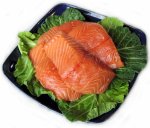
Healing Foods for Heart
Disease
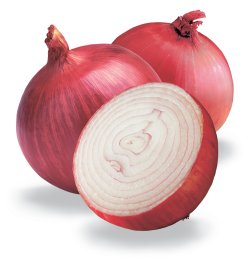
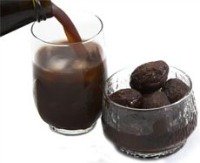

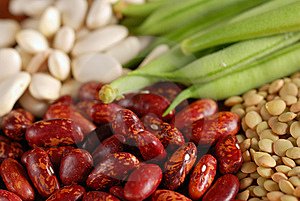


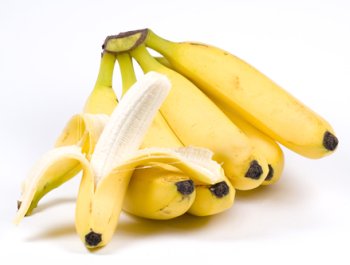
New! Comments
Have your say about what you just read! Leave me a comment in the box below.